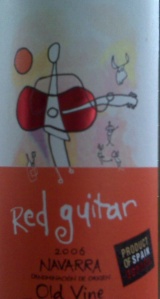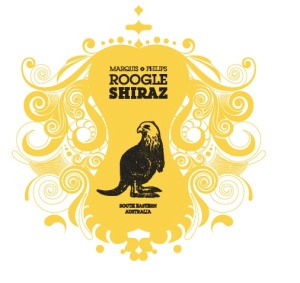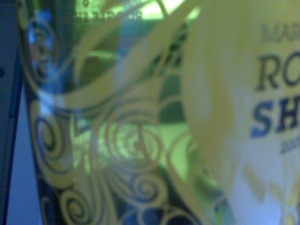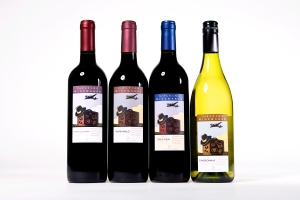I noticed this trio of wines because of the stringed instruments–two with guitars and one with a lute–featured on their labels. My husband and his son play the guitar, the latter professionally. My husband plays acoustic guitars, his fave being his beloved Martin D-28.
All three of these wines have Spanish pedigrees, just like the guitar. The 4,000-year history of the six-string guitar can be traced back to Spain and beyond. However, as Paul Guy points out, the lute, which appears on one of these wine labels, is not the guitar’s ancestor. The lute’s predecessor was the oud, a Moorish instrument. I found two video clips of Spanish music, but alas, could not find any of baguala.
Martín Códax Ergo Rioja

Martín Códax was a late 13th or early 14th century troubadour from Galicia. You can see his original music manuscripts on parchment here, which were found by chance in the early 20th century. Watch the Martín Códax Ensemble play one of his cantigas:
This rioja–86 percent Tempranillo and 14 percent Mazuelo–was produced by the winery Bodegas Martín Códax, founded in 1986 in Combados, Spain. Elliott Essman writes on his blog that he savored this wine, left untouched by his dinner guests the previous night (“Their loss, my gain”):
Much of the wine is aged eight months in American oak. Sweet oak, toast and vanilla come as primary aromas, with red berries and citrus peel. The Rioja, for all the ripeness of its fruit, is extremely dry, with moderate acidity and compliant tannins. The wine is very well balanced and fully palate friendly, bringing cocoa, tobacco, dried herb, deep ripe cherry and red berry. The finish is medium length and well filled with gentle juicy fruit.
I too loved this one!
Baguala Corte Tinto
 Baguala, the national music of Argentinian mountain people, features guitars, drums, other percussion such as blocks, and vocals. According to the Wine of the Month Club newsletter, “the baguala has Indian origins and is a chant composed of a simple melody built on three notes and then improvised and developed throughout the song.”
Baguala, the national music of Argentinian mountain people, features guitars, drums, other percussion such as blocks, and vocals. According to the Wine of the Month Club newsletter, “the baguala has Indian origins and is a chant composed of a simple melody built on three notes and then improvised and developed throughout the song.”
Made from vineyards of Finca La Buena (6,400 feet above sea level) in the Calchaquí Valley in northwest Argentina, this rich rioja is 36 percent Cabernet Sauvignon, 36 percent Syrah, 18 percent Malbec and 10 percent Merlot. It tastes of lush fruits with some spice.
Red Guitar “Old Vine” Tempranillo Garnacha
 The illustration on this wine label echoes the work of the Spanish artists Picasso and Miró. When I think of Spanish guitarists, classical guitarist Andrés Segovia (1893-1987) immediately comes to mind. Segovia played 19th and early 20th century music–not flamenco. Here he is playing in his later years:
The illustration on this wine label echoes the work of the Spanish artists Picasso and Miró. When I think of Spanish guitarists, classical guitarist Andrés Segovia (1893-1987) immediately comes to mind. Segovia played 19th and early 20th century music–not flamenco. Here he is playing in his later years:
The grapes for Red Guitar wine grow on vines that are over 100 years old, which, because of their age, yield fewer grapes yet have a more concentrated flavor. These vineyards in the small village of Lerga, Spain, which is in the Navarra region (between Rioja and Bordeaux), were handed down from generation to generation. Winemaking in this village dates back 2,000 years plus, when the Romans saw that its climate and soil were ideal for growing grapes. Red Guitar is overseen by Carlotta Orradre.
Chosen as Wine of the Week, a Washington Post writer notes, “The wine is quite sophisticated and is a great jumping-off point for further exploration of Spanish, French and other European wines.”





